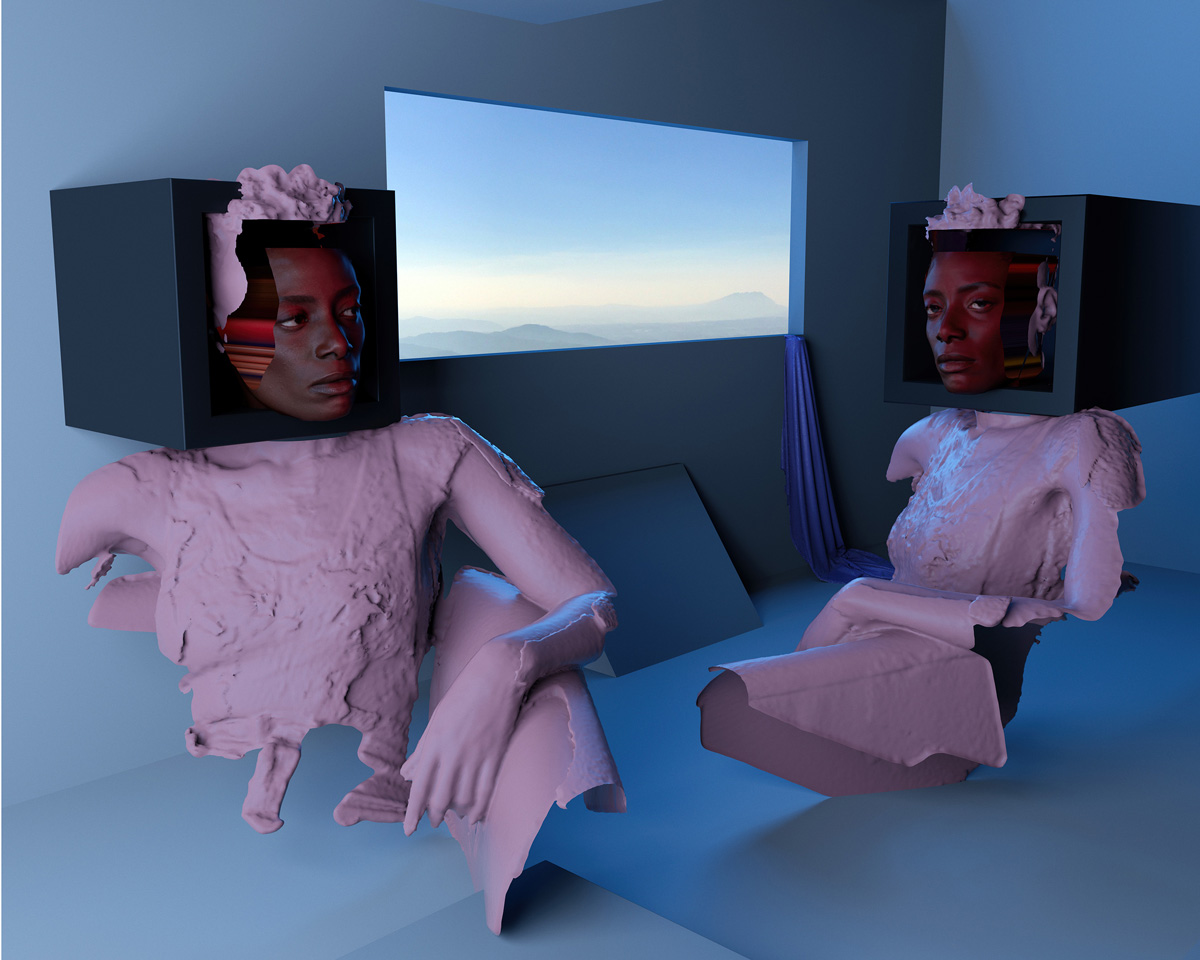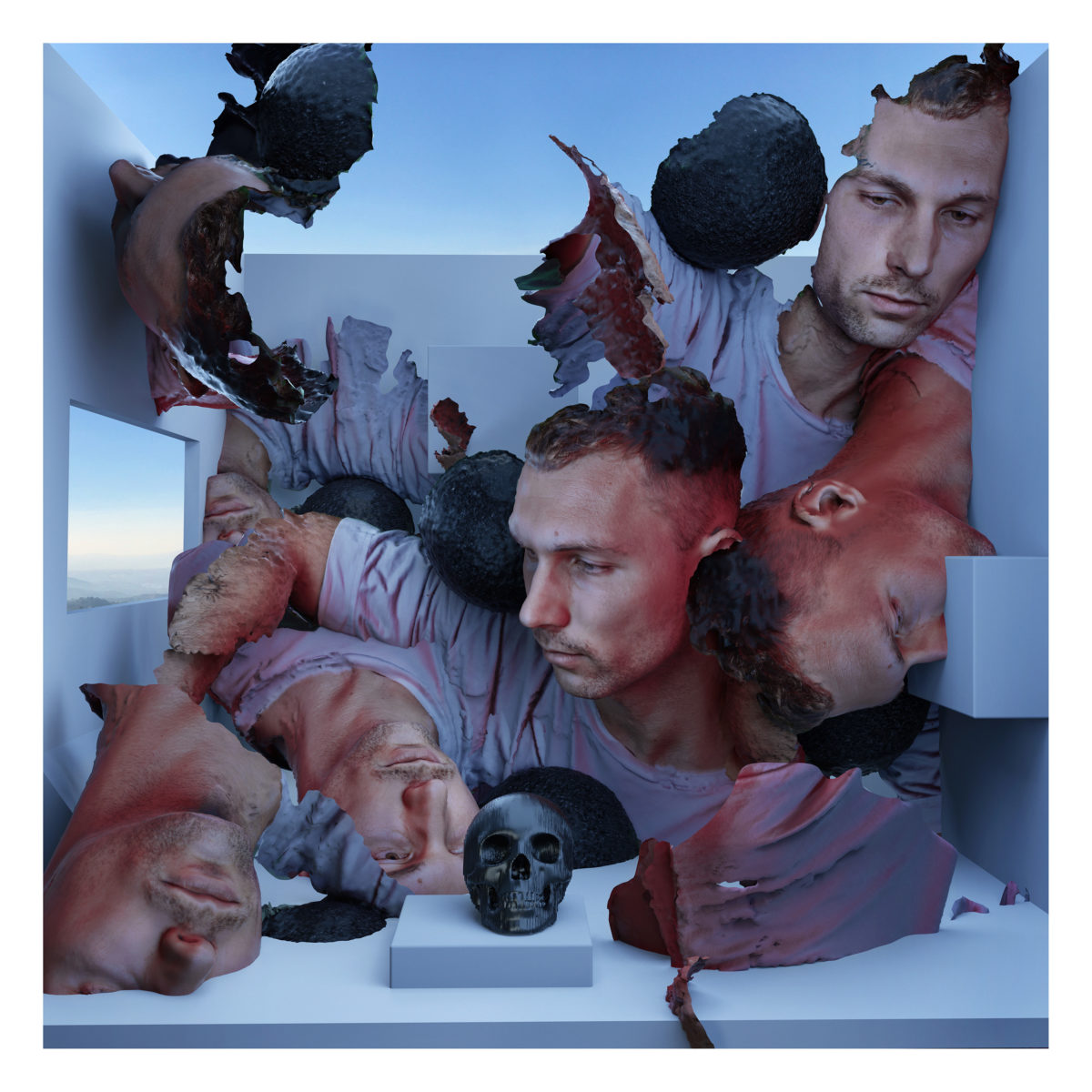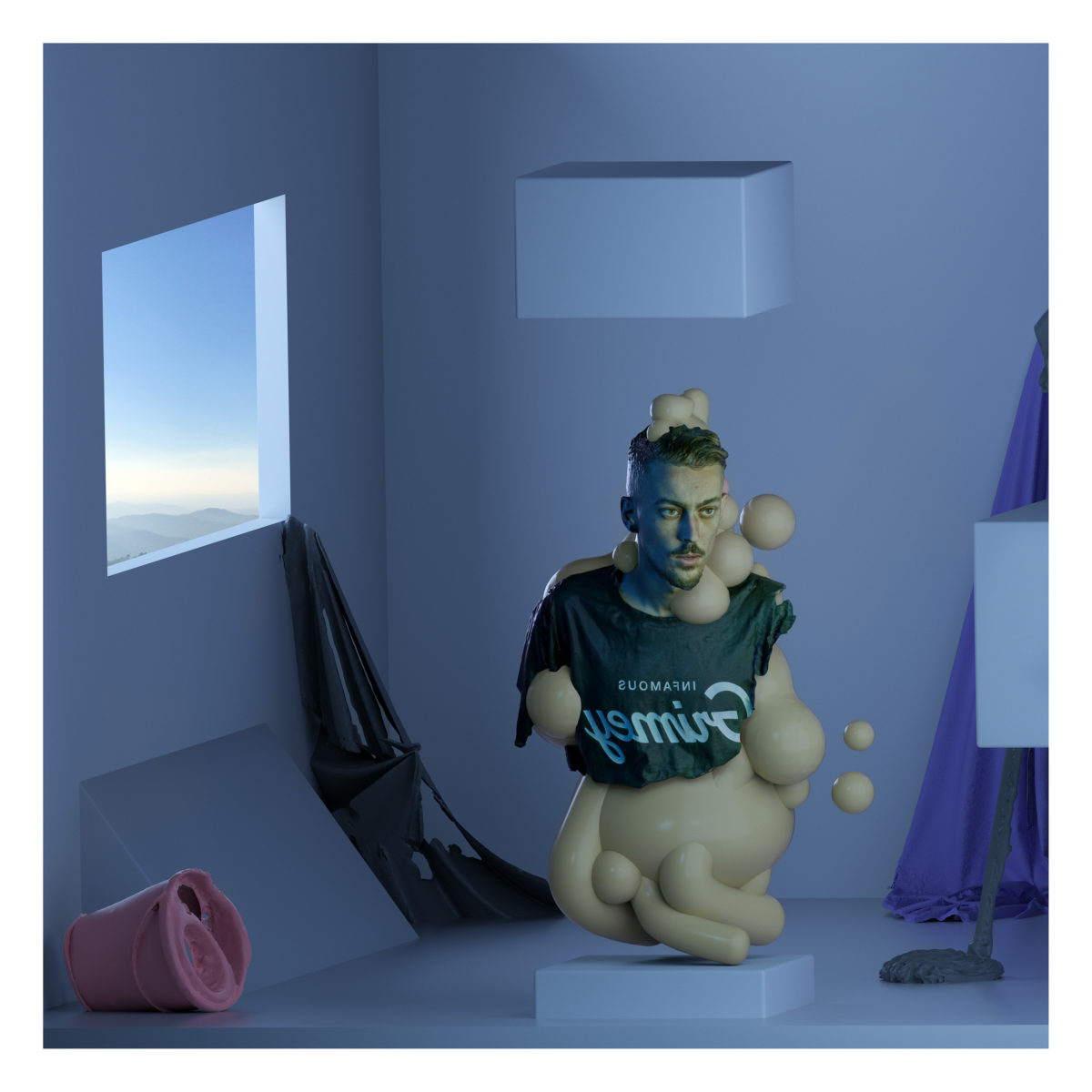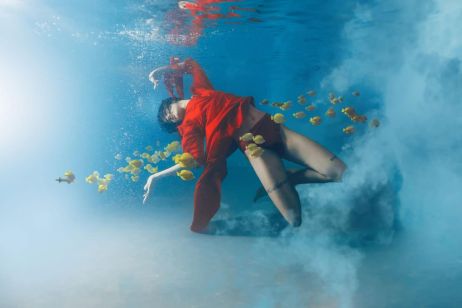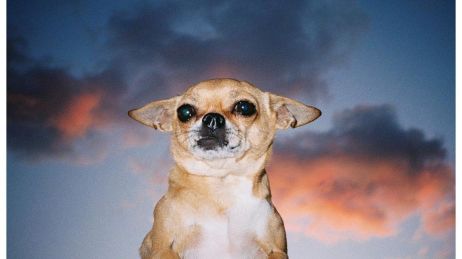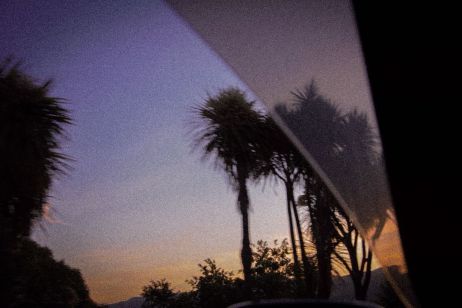Photographer Dimitri Daniloff joined forces with plastic artist Tamal De Canela to question reality and its perspectives. Together, they have built The unrestricted human, a virtual character, anchored in reality. We interviewed one of its maker, Dimitri Daniloff.
Fisheye : How did you approach the series The unrestricted human?
Dimitri Daniloff : I followed an empirical approach. This was a genuine exploration, because I was using a new method. I set myself a rule of ‘unit of place’, without seeking coherence. The different elements were scanned and used raw, to keep their imperfections. The unrestricted human is not made of photography, nor 3D, but of both at the same time. To create images, I used photogrammetry. A process consisting in creating measures in a scene, and building a 3D model from a series of photo, using a software. I have never used Photoshop for those images. With The unrestricted human, I have developed a new way to conceive image. Until now, 3D was trying to adapt, to look like a real world. Here, reality enters the 3D universe. Real and virtual elements are first created, then placed in a space. Thus, these images exist in the virtual world, and one may go into the image with a virtual reality headset; a total immersion. One may visit the image, and get closer to the characters. This approach has enabled me to push the limits of 2D image, by creating a picture which exists in two different formats: turning us into actors and spectators.
How was this desire to twist reality born? Has reality as we know it become unbearable to you?
I do not have a pessimist vision of reality. Many things are revolting, that is true, but in my work, I focus on the extension of possible outcomes. I try to go over the limitations of the body and thoughts. Especially, in this series, in this ambiguous universe between 3D and realism. Here’s a space where you can choose your appearance, and get rid of this body slowing us down. The reality of both worlds interests me: it is a new virtual space opening to us. This is what I try to define. Those two worlds are complementary, they are merging.
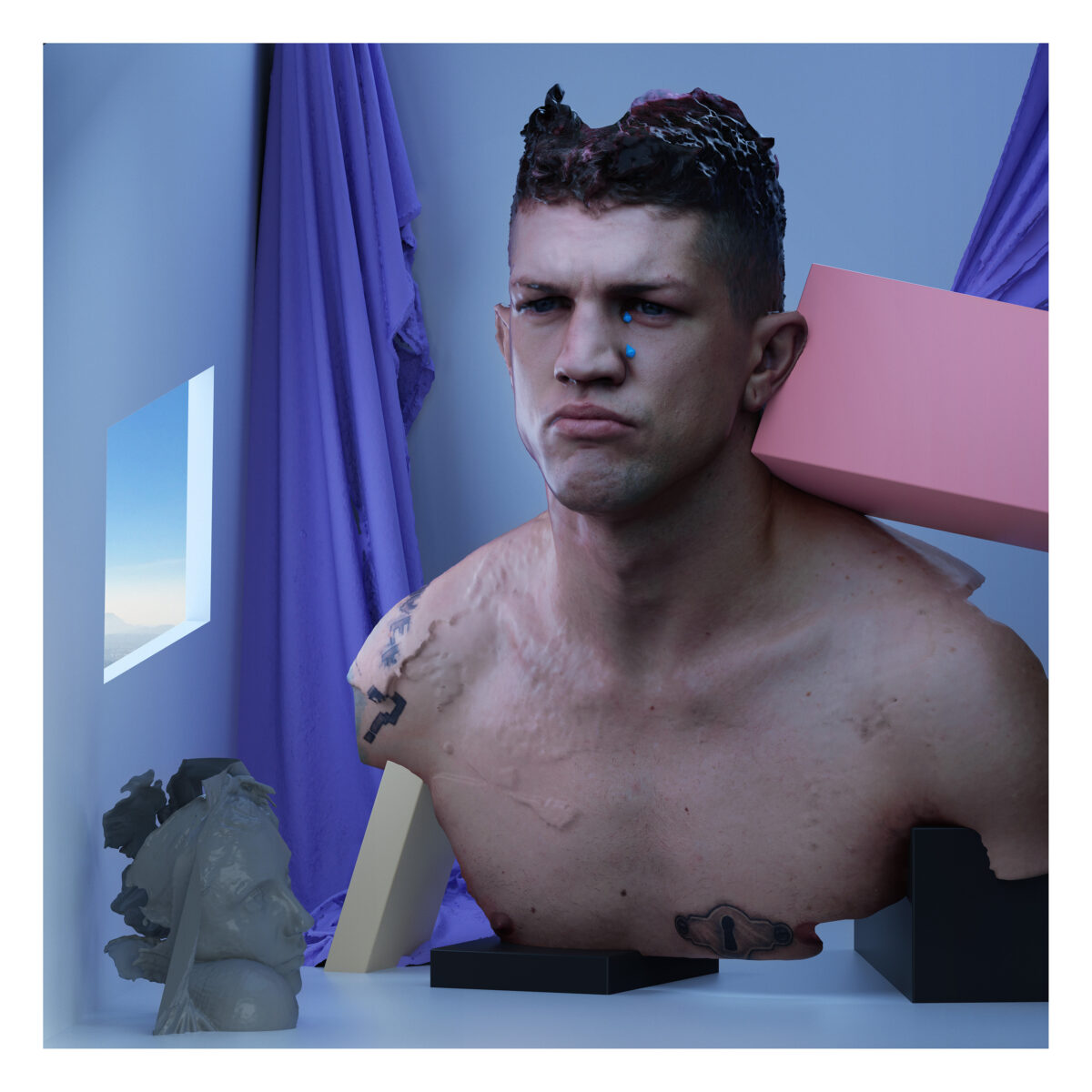
What was the genesis of the project?
For a long time, I have been frustrated with 2D photography. The original idea was to take the physical body into the digital world. To make this virtual world real. I really wanted to create an image one could enter in a physical way, by going out of the frame. Thanks to virtual reality, it became possible.
This series was also created following my discovery of photogrammetry. This technique enabled me to scan people, objects – whatever I wanted, really- without necessarily having a unit of time, of space, in the capture. Then, I organised everything the way I wanted it… Going beyond the frame of simple photography is fascinating, to me. It is as if I could sculpt reality. The image is created out of the frame, since it is situated in a tridimensional universe. The final product has volume and texture.
Are we unrestricted humans?
I wish to show our ability to become gods through the digital universe. We are now able to go past our earthly body. We have the possibility to be here and there at the same time. We move at lightning speed. To be. To have a fragmented identity, enabling to reveal only parts of it. Those images show our imperfections in this digital world, and our sensuality as well, through the use of busts evoking Greek statues. We are able to choose our appearance.
Where were your influences, throughout this project?
I wanted to stay close to The Milkmaid, by Vermeer (1658). I thought this painting was reassuring – because of her human proportions – contrasted by the boundless digital universe. And this window through which we see the real world reassure us as well, it connects us to what we know.
I was also inspired by mythology: I like looking from above, thus placing the virtual man in the position of a God.
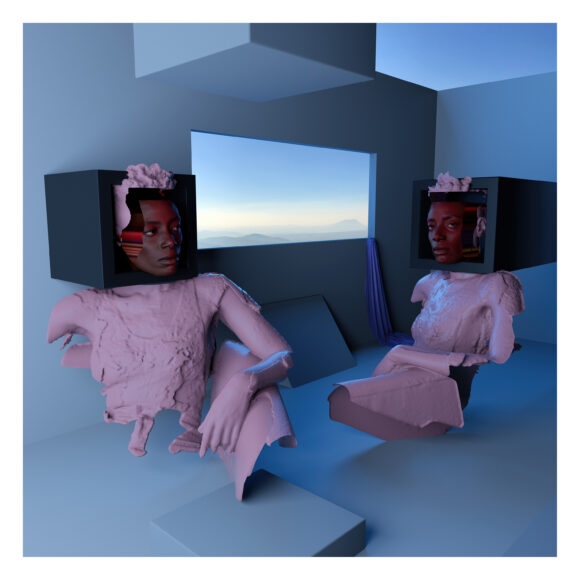
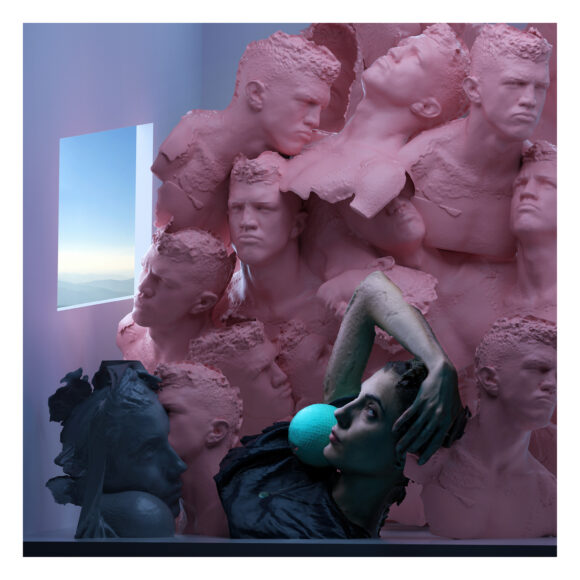
How do you feel about 3D?
I want to thank Tamal De Canela, for collaborating with me on this project. He took care of the 3D, but also the virtual reality. Here, 3D is a mere materialisation of a virtual universe. Though the perspectives seem fake, they are real in the creation. The aim was to locate this place on the other side of the border to reality. This is a world constantly developing, and it will change again, through the practice of photogrammetry.
The boundaries between reality, fiction, and artifice is thin, how do you find the right balance?
I can hardly say whether the balance is right. But I do know that questioning what is real, unreal, possible and impossible help reach this balance. The virtual world is becoming more and more real.
How do you envision the future, and the virtual future?
The future, or virtual future is merely the disappearance of the boundary between the real and virtual worlds. We may create a doppelgänger, who would live in a virtual zone, independently. We may easily navigate between one and the other. In fact, they would merge to become one. We may live in one, having disappeared from the other. We may choose in which part of the world we want to live. And in the ‘virtual’ zone, we may reach immortality, thanks to data accumulated throughout our lives. We also may have several identities, we would live differently. Each of our avatars would represent one of those identities.
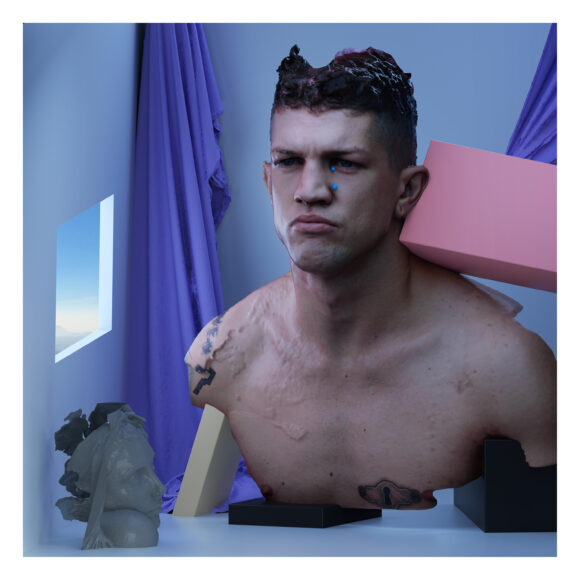

© Dimitri Daniloff
